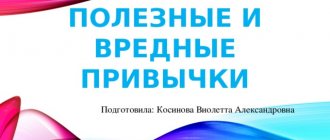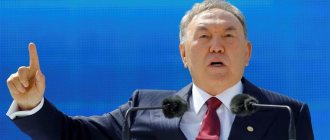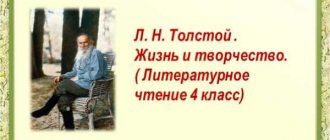Especially for National Unity Day. Thematic video lesson + game
A string of tragic events that occurred in Russia at the turn of the 16th-17th centuries called into question the very existence of the Russian state - this era went down in history as the Time of Troubles . The cause of the Troubles, according to historians, was the end of the Rurik dynasty.
The Time of Troubles contained so many events that in the history of any other state they would have been more than enough for a good hundred years. A series of disasters, a monstrous famine and severe drought, popular unrest and riots that developed into real wars, a plague epidemic.
During this time, several kings managed to rule our country, among whom were representatives of two noble boyar families - Boris Godunov and Vasily Shuisky, as well as the miraculously resurrected “son” of Ivan the Terrible, Tsarevich Dmitry, who was killed in childhood. And there were several of them. The most famous ones entered Russian history under the names False Dmitry I and False Dmitry II. Moreover, some of the boyars signed an agreement with the Polish hetman Stanislav Zolkiewski, according to which the son of the Polish king Sigismund III, Prince Vladislav, now became the Russian Tsar.
Of course, such actions of the boyars were perceived by the Russian people as a betrayal of their Fatherland. Calls followed for the convening of the people's militia and the restoration of justice.
On the church porch, the merchant Kuzma Minin addressed the people and said in a loud voice: “Orthodox people! The time has come to help our dear Rus'! Let's save our faith and our dear Motherland. We will not spare our property, we will sell our houses, we will give away the last thing we have to hire an army. Let's look for a person who would stand up honestly and bravely for his native land. Then other cities will unite with you, and, God willing, we will drive out the enemy.”
At the end of July - beginning of August 1612, the militia approached Moscow. After a long siege, the Polish garrison, settled in the Kremlin, was forced to capitulate, and on November 4, 1612, the capital of the Moscow State was completely liberated from Polish invaders.
This victory served as a powerful impetus for the revival of the Russian state.
At the end of February 1613, the Zemsky Sobor, which included representatives of all classes of the country, elevated Mikhail Fedorovich Romanov , the founder of the new royal Romanov dynasty, whose representatives ruled our country until 1917, to the Russian throne. The accession to the throne of the Romanov dynasty marked the end of the Time of Troubles and the beginning of a new period of history for our country.
On November 4 , we pay tribute to the events when society, siding with the state, saved it from imminent death. Mortal danger united all the patriotic forces of the country. The popular movement saved Russian statehood. In times of timelessness, the best features of the Russian people emerged - their resilience, courage, selfless devotion to the Motherland, and their willingness to sacrifice their lives for it.
The holiday calls on people not only to remember the most important historical events, but also reminds citizens of a multinational country about the importance of unity in the face of the looming threat to the Motherland. It also serves as a reminder that only together can we cope with difficulties and overcome obstacles.
The main goal of the holiday comes down to the unity of people of different religions, origins and status to achieve a common goal - stable civil peace, as well as respect for the patriotism and courage that was shown by the liberators of Moscow.
National Unity Day is an occasion for all citizens of the country to realize and feel like one people. We hope that our video lesson will help you convey this very important idea to your students. And the interactive game “Time of Troubles” .
In order to start the game and familiarize yourself with the rules or symbols, you need to move the mouse cursor over the menu item you need and press the left button.
After starting the game, you will be taken to the loading screen of the main playing field. In order to start the game, you need to move the mouse cursor over the circle and click on the left mouse button.
The screen will display a question and four answer options.
After the team selects an answer from the provided clues, a screen will appear that will indicate whether the players answered correctly or incorrectly.
In order to return to the main playing field, on the screen with the answer you need to click on the “Go back” button.
Lesson of courage “National Unity Day”
On November 4, Christians celebrate the feast of memory of the Kazan Icon of the Mother of God, and since 2005, the Day of National Unity.
- Motherland and unity... Tell me, how do you understand these words?
— What do you think the National Unity Day holiday calls us to?
Russia has been tested many times and has more than once experienced times of chaos, hostility and anarchy. When the country weakened, its neighbors pounced on it, rushing to snatch a bigger and fatter piece. However, you can always find the most plausible excuses for robbery and robbery. We called these times troubled, and also bloody. Internal and external storms shook the country to its very foundations, so much so that not only the rulers, but also the forms of government themselves changed. But the country rose from the ashes again and again. After each tragedy, she only became stronger, the envy of her enemies.
Now let’s move back 400 years to the beginning of the 17th century, when the Great Troubles began in Russia. This was the name given to the alarming time of crop failures, famine, unrest and uprisings. Taking advantage of this, the troops of the Polish and Swedish kings invaded Russian lands. Soon the Poles were in Moscow. A mortal danger looms over the country. Polish troops burned out the Russian state, ruined it, killed people. Sighs and crying were heard all around.
Then the patience of the people came to an end. The Russian people decided to unite as one to expel enemies from their native land.
A huge crowd filled the Cathedral Square in Nizhny Novgorod. The people did not leave for a long time, as if they were waiting for something. Here the elected chief of the townspeople climbed onto the empty barrel. Headman Kuzma Minin.
- Brothers! “We won’t regret anything!” said the headman.
“We will give everything we own to save our Motherland.”
Pulling out a wallet tightly stuffed with money from his bosom, he immediately poured it into a bucket standing next to him. All the people from the square began throwing money and jewelry here. Residents began to demolish everything they had, everything they had accumulated over their lives. And whoever had nothing took off his copper cross and gave it to the common cause. It was necessary to have a lot of money to gather a large and strong army, arm it and feed the soldiers.
Soon a large force gathered. They began to think about who to call as leaders. We settled on Prince Dmitry Mikhailovich Pozharsky. Pozharsky was a capable, intelligent military leader, an honest and fair man. The prince agreed to lead the troops, but on the condition that Minin would take care of the economy of the militia and its treasury.
According to legend, Sergius of Radonezh blessed Prince Dmitry Pozharsky to rule the army and march against enemies.
A miraculous image of the Blessed Virgin Mary was sent from Kazan to the militia, which was headed by Prince Pozharsky. Knowing that the disaster was allowed due to sins, the entire people and militia imposed a three-day fast on themselves and prayerfully turned to the Lord and His Most Pure Mother for heavenly help. And the prayer was answered.
The celebration, November 4, of the Most Holy Theotokos, in honor of Her icon, called “Kazan”, was established on this day in gratitude for the deliverance of Moscow and all of Russia from the invasion of the Poles in 1612.
The army led by Dmitry Pozharsky moved towards Moscow and along the way grew by leaps and bounds. People flocked from everywhere.
The entire Russian land stood up against the invaders and traitors. The battles for Moscow began. Prince Pozharsky turned out to be a talented commander. And Kuzma Minin, not sparing his life, fought under the walls of the capital like a simple warrior.
Pozharsky besieged Moscow for two months. Soon the Poles surrendered, Pozharsky triumphantly entered the city.
On November 4 (October 22, old style), 1612, the enemy army surrendered to the mercy of the victors, the militia led by Minin and Pozharsky took Kitay-Gorod. Moscow was liberated.
These are the real heroes. They managed to unite the people around the idea of serving the Fatherland.
When times of peace came, the new tsar generously rewarded Minin and Pozharsky. But the best reward was people's memory. It is not for nothing that a bronze monument to them stands on Red Square - in the very heart of Russia with the inscription: “To Citizen Minin and Prince Pozharsky, grateful Russia.”
And such a monument was erected in Nizhny Novgorod.
In memory of the liberation of Moscow from the Poles, the Kazan Cathedral was built in Moscow with the money of D. Pozharsky, in honor of the Kazan Icon of the Mother of God.





